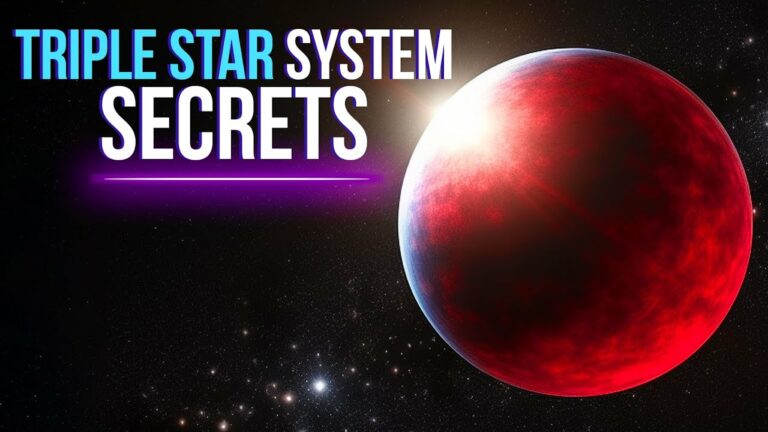Alpha Centauri Secrets: Is It Anything Like Our Solar System?
In our galaxy, exist billions of stars that could harbor life; many of these stars are relatively close to our solar system. However, the closest of all is the Alpha Centauri star system.
This system is made up of 3 gravitationally linked stars, and in the future, it will undoubtedly be the first place that humanity will visit when I manage to leave the solar system, but… How can three stars be orbiting each other without colliding, and what similarities does this star system have? With ours? Does it also have rocky and gaseous planets like the ones that orbit the Sun?
Join us to find out!
A long trip
Despite Alpha Centauri is the closest star system to ours, humanity will not be able to visit this place for at least this century since spacecraft technology cannot cover such enormous distances in a human lifetime.
As an example, the Voyager probes are the spacecraft created by humanity that have gone the farthest; they are currently at the edges of the solar system traveling at a speed of 38,000 miles per hour or 61,200 kilometers per hour, but although This speed is surprising to us, traveling at this speed the Voyager probes would take tens of thousands of years to reach Alpha Centauri.
So if you were considering visiting this star system, we are sorry to break your illusions. That will not be possible now.
However, we can study this solar system with our most powerful telescopes. Thanks to this, we have discovered essential things with which we now know that this place is very different from our solar system.
Location
Located at a distance of 4.5 light-years from Earth, the Alpha Centauri star system is moving in a direction similar to the direction the Sun moves around the galaxy.
The orbital speed of the Sun and Alpha Centauri around the galactic center is estimated to be around 220 kilometers per second (500,000 miles per hour). Both stars and other stars in the solar neighborhood take approximately 200-250 million years to complete one orbit around the galactic center.
It is important to note that the orbital motion of the stars around the galaxy is not linear but a motion in an elliptical orbit. Also, stars’ exact speeds and trajectories can vary due to gravitational interactions with other stars and local gravitational disturbances.
This system is made up of 3 gravitationally linked stars, and in the future, it will undoubtedly be the first place that humanity will visit when I manage to leave the solar system, but… How can three stars be orbiting each other without colliding, and what similarities does this star system have? With ours? Does it also have rocky and gaseous planets like the ones that orbit the Sun?
Join us to find out!
A long trip
Despite Alpha Centauri is the closest star system to ours, humanity will not be able to visit this place for at least this century since spacecraft technology cannot cover such enormous distances in a human lifetime.
As an example, the Voyager probes are the spacecraft created by humanity that have gone the farthest; they are currently at the edges of the solar system traveling at a speed of 38,000 miles per hour or 61,200 kilometers per hour, but although This speed is surprising to us, traveling at this speed the Voyager probes would take tens of thousands of years to reach Alpha Centauri.
So if you were considering visiting this star system, we are sorry to break your illusions. That will not be possible now.
However, we can study this solar system with our most powerful telescopes. Thanks to this, we have discovered essential things with which we now know that this place is very different from our solar system.
Location
Located at a distance of 4.5 light-years from Earth, the Alpha Centauri star system is moving in a direction similar to the direction the Sun moves around the galaxy.
The orbital speed of the Sun and Alpha Centauri around the galactic center is estimated to be around 220 kilometers per second (500,000 miles per hour). Both stars and other stars in the solar neighborhood take approximately 200-250 million years to complete one orbit around the galactic center.
It is important to note that the orbital motion of the stars around the galaxy is not linear but a motion in an elliptical orbit. Also, stars’ exact speeds and trajectories can vary due to gravitational interactions with other stars and local gravitational disturbances.
Do not forget to share your opinion with us to provide you with the best posts !




0 Comments